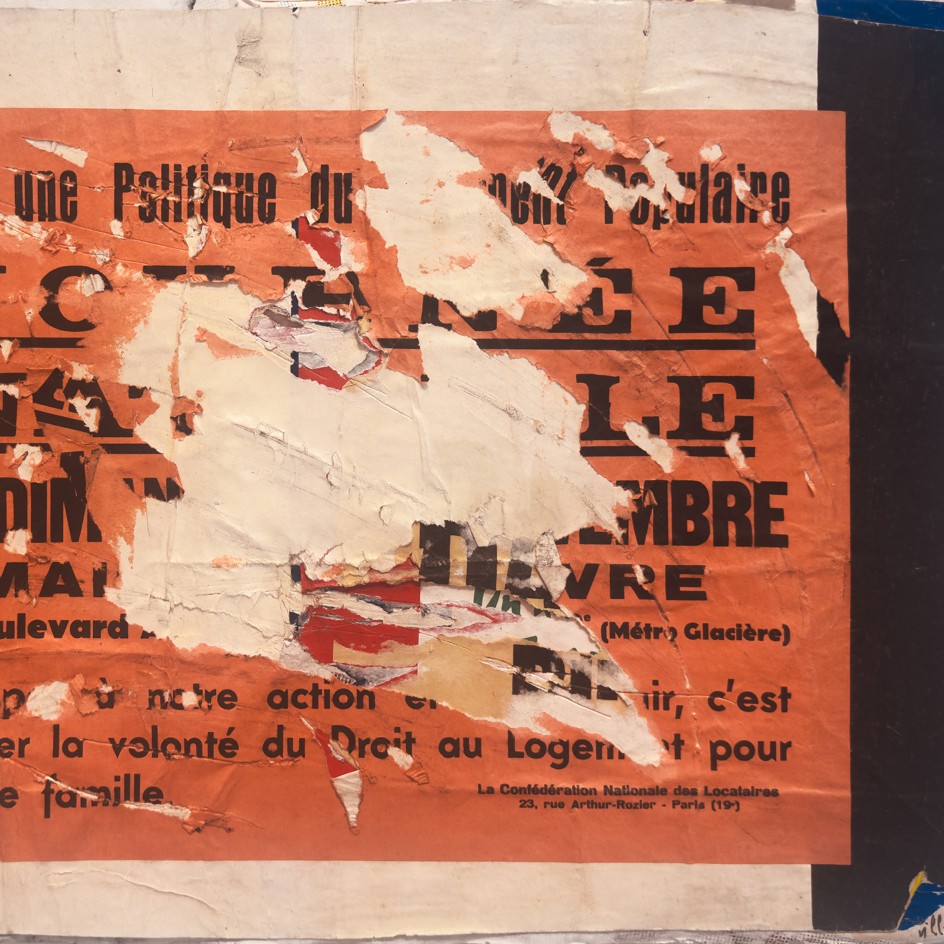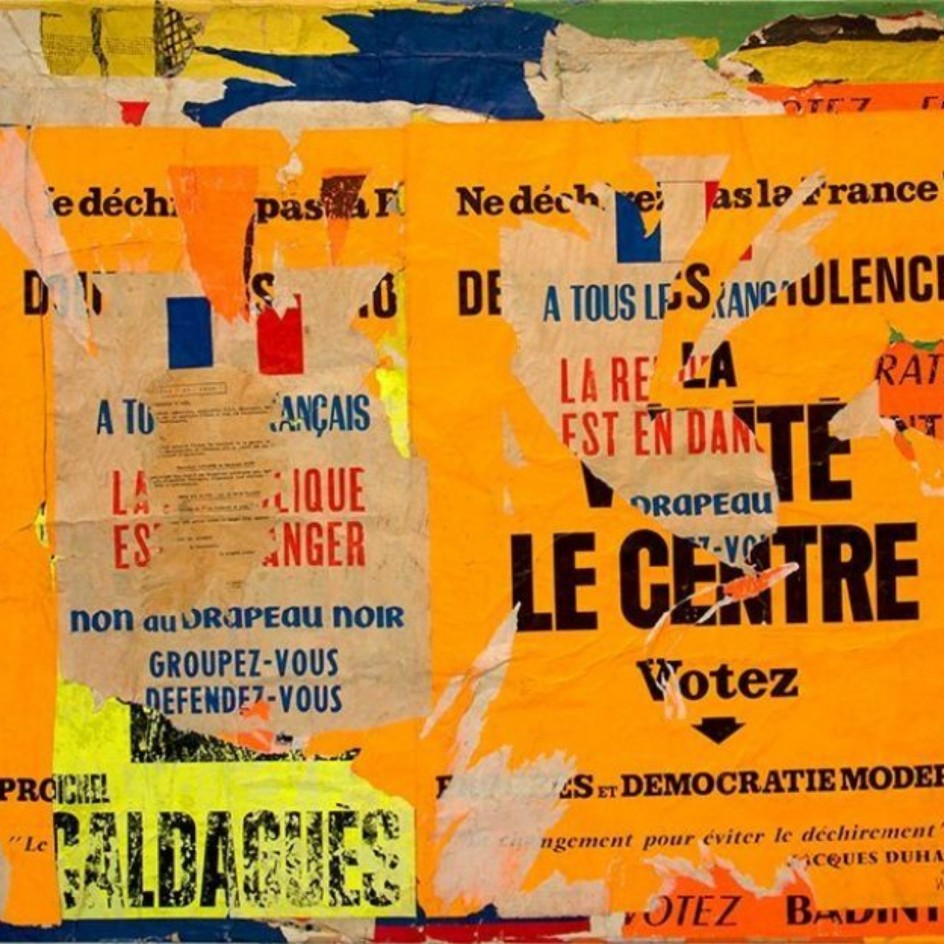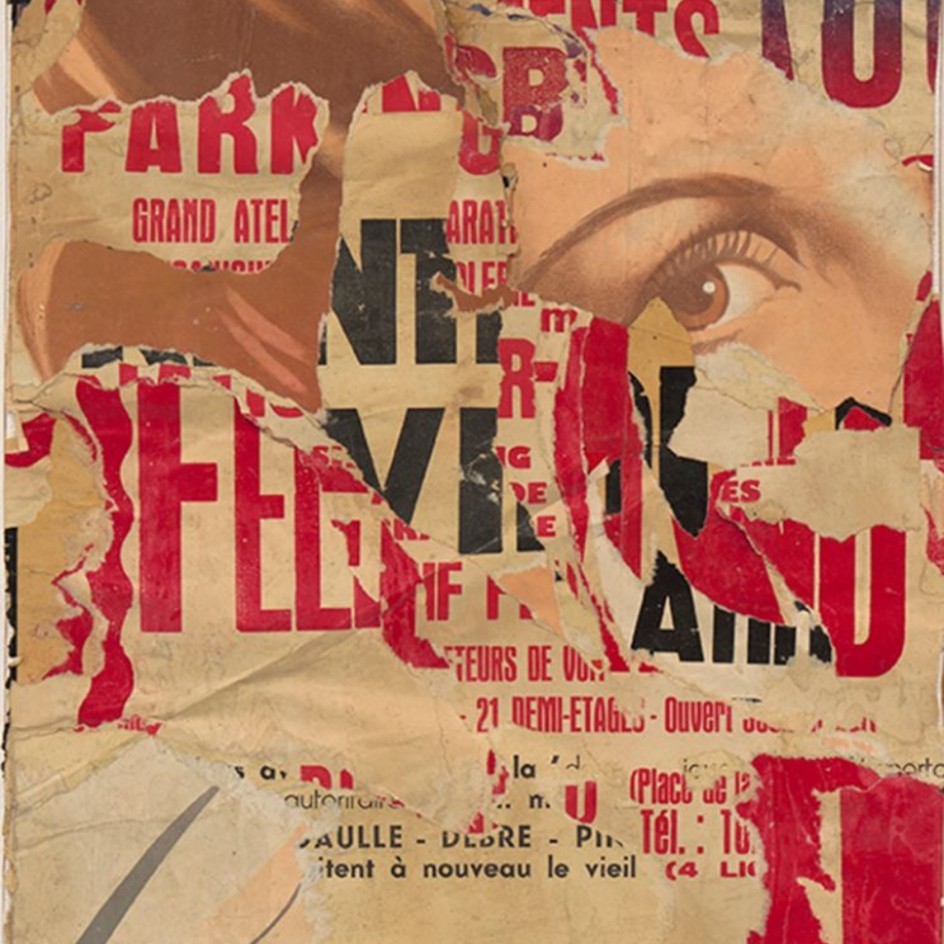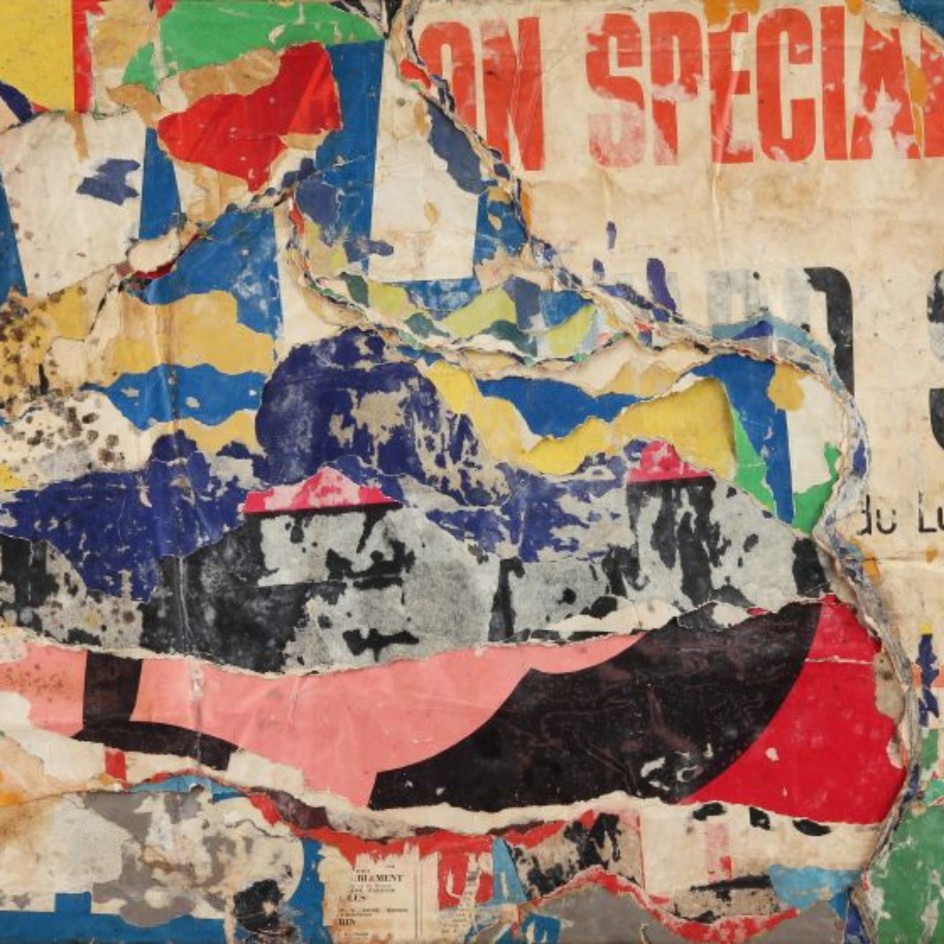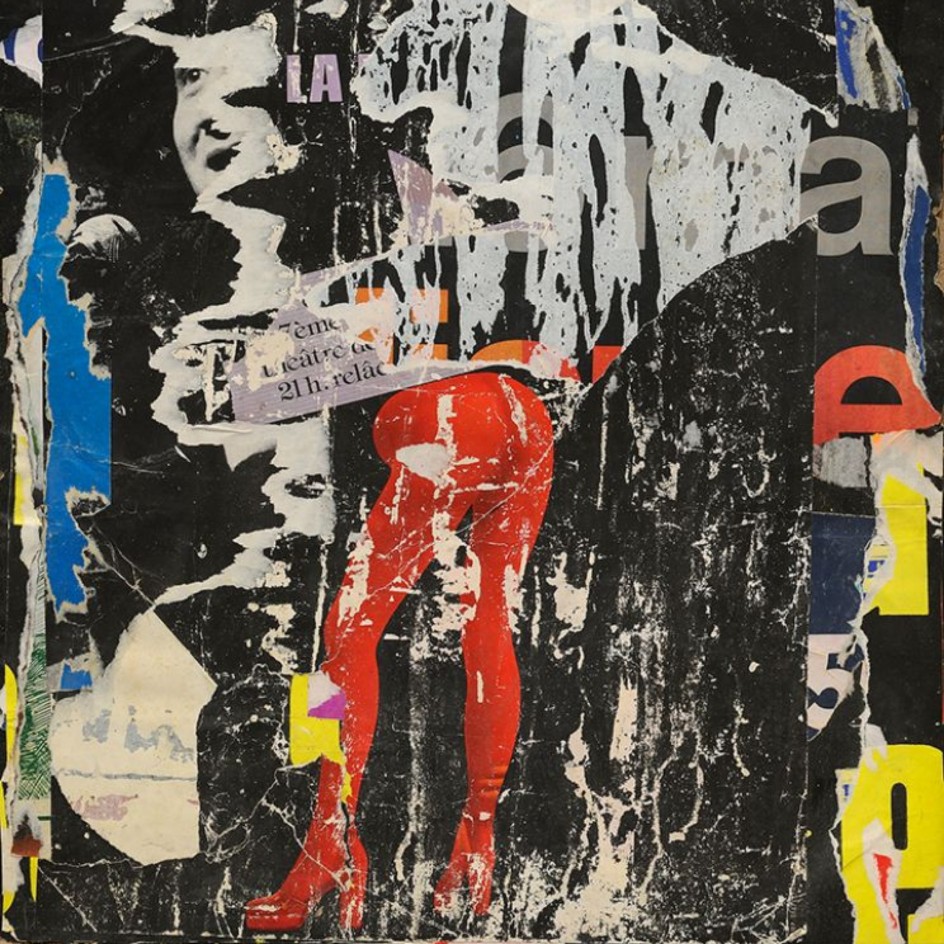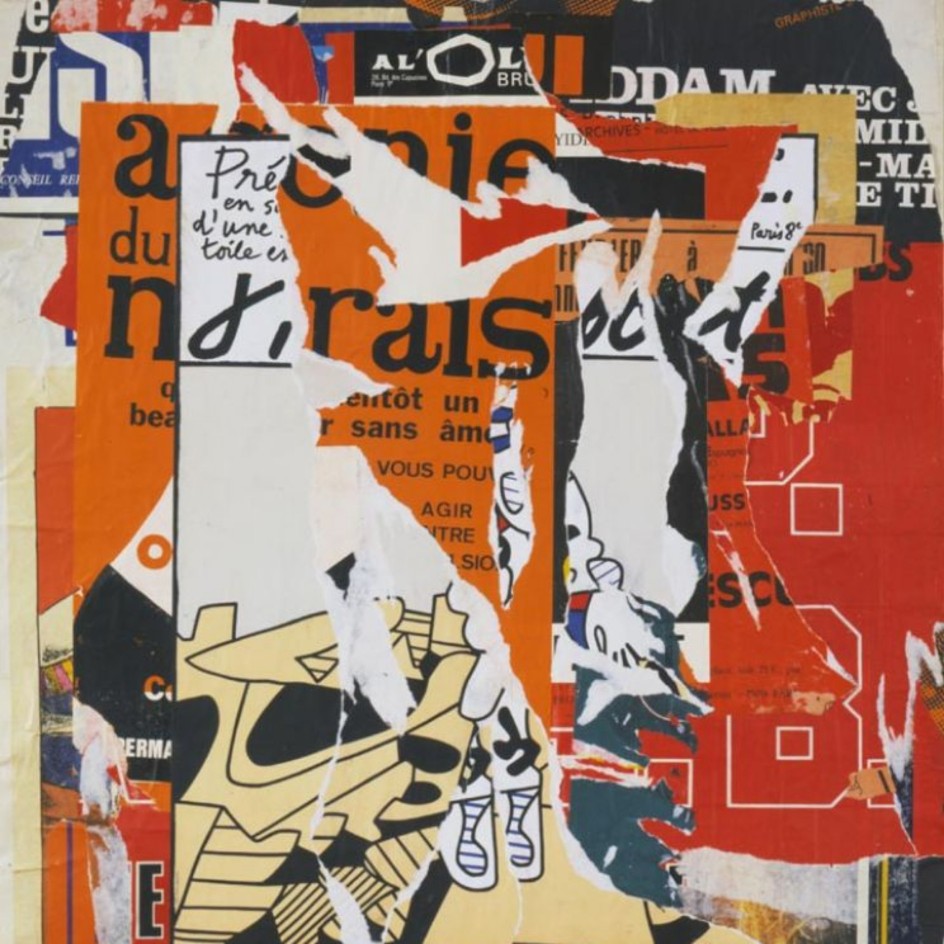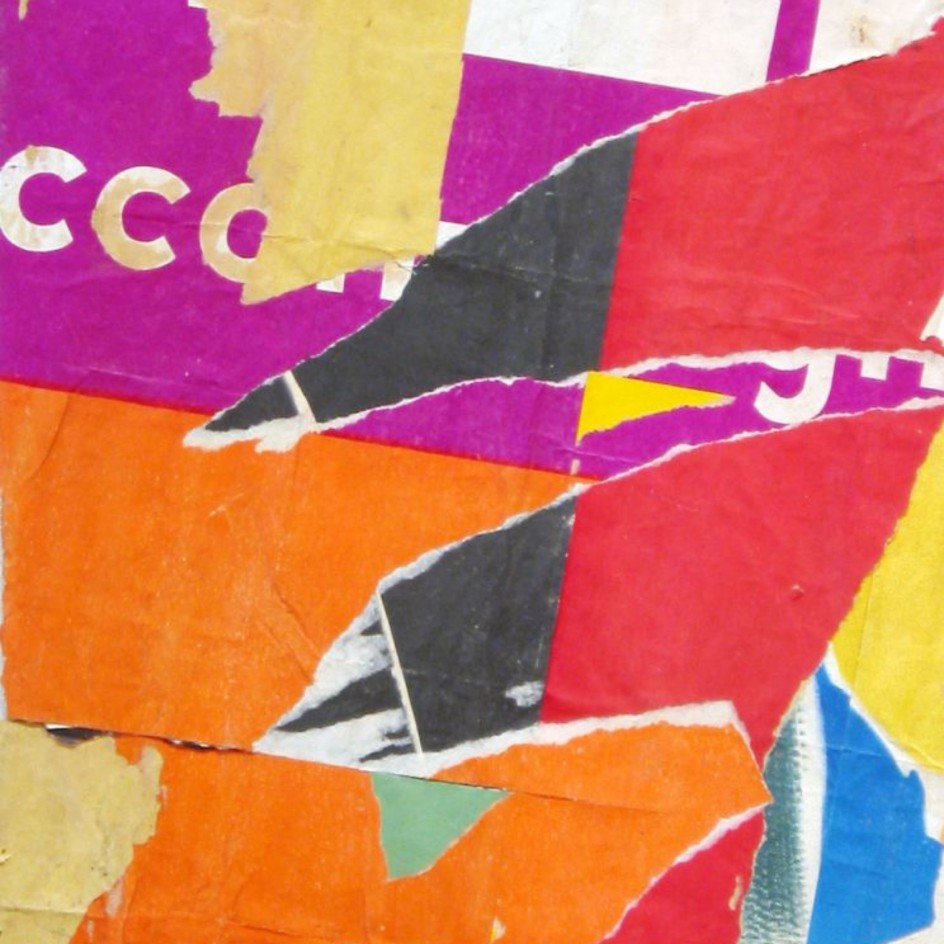Jacques VILLEGLÉ
-

Rue Lefranc
-

Colonne Morris - rue des Ecoles

Avenue de Suffren

Boulevard Diderot

Rue de Sevres

Rue Lhomond

Les Halles - rue Baltard

Mise a prix

Rue des Vertus

Rue du Faubourg Saint-Martin

13 street

Les Reveuses d'Ivry

Banlieue ouest

Rue Pelleport

Rue de Rennes

Saint-Jacques / Saint-Germain

Rue des Ecoles

Clermont-Ferrand

25, boulevard de Sébastopol

Boulevard Haussmann

Rue de Mézières

Place Jeanne dArc

Métro Arts-et-Métiers

Métro République 1969

Boulevard de la Villette

Rue de l'Atlas

Rue Des Halles

Rue Simon Le Franc

Sex Sebastopol

Boulevard Haussmann

Rue du Faubourg Saint-Martin

Sortie Est De Paris

Rue de l'Est Parisien

Operation Quimperoise Theatre Max Jacob

7, rue de Turbigo

Haussmann-Malesherbes

Sortie de l'autoroute sud - Le Kremlin-Bicêtre

Lille - Rue Littré

Summary
For over seventy years, Jacques VILLEGLÉ’s work has played an important role in redefining what constitutes a work of art. He is an artist who was instrumental in bringing the streetscape into the space of the exhibition.
EXCERPT FROM THE FORTHCOMING MONOGRAPH: JACQUES VILLEGLÉ AND THE STREETS OF PARIS
BY BARNABY CONRAD III:
Jacques Villeglé is an aristocratic scavenger who spent most of his life wandering the streets of Paris, pulling torn advertising posters off the ancient walls and pronouncing them Art. “In seizing a poster, I seize history,” he says. “What I gather is the reflection of an era.”
Born in Brittany in 1926, Villeglé was a seventeen-year-old architectural apprentice in Nantes during the bleak days of the German Occupation. After the Liberation in 1944, he moved to the City of Light, where he was drawn to filmmaking, avant-garde Lettrist poetry, and painting. The prewar art movements of Cubism and Surrealism had melted into abstraction, but Villeglé’s earnest attempts at Art Informel soon struck him as redundant, and he destroyed his canvases. Without a job and at loose ends intellectually, he became a flâneur, a curious intellectual roaming through war-scarred Paris. “As I walked through the streets, I was struck by the color and typography of the posters. In those days, the cinema and concert posters rarely had images—just words—and they had been torn and shredded to where they became something else, with a post-cubist look to them. I began to see them as paintings made by anonymous hands.”
In 1949, Villeglé and his then artistic collaborator, Raymond Hains (1926–2005), scavenged advertising from billboards on the grand boulevards, snatched political posters in the financial district, and pillaged Left Bank walls plastered with flyers for jazz concerts and art exhibitions. Mounting them on canvas, they presented a new kind of art. Between 1949 and 2003, Villeglé himself plucked more than 4,500 works from all twenty of Paris’s arrondissements, carefully labeling each with the exact date and street address of the heist, just as a lepidopterist might record the habitat of a newly captured butterfly. Each work became a unique time capsule of the ever-changing city.
Right from the start,” he wrote, “I anticipated that the eventual output of this series would surpass the production of the most imaginative of my generation’s painters, and that my a priori determination to focus on the oeuvre of a diffuse collectivity would give me greater freedom than any achieved by the artist facing a blank canvas.” Villeglé was an archivist using anonymous crowdsourcing to create art.
In his extensive writings and interviews, Villeglé portrayed himself as a medium for the faceless genius of the Lacéré Anonyme, the anonymous lacerator whose restless hands tore and reshaped the posters into something different. “What I like above all about posters is the disorder,” stated Villeglé. “I start with material that was produced without any thought process and then apply a thought process.” With a sharp knife and a hearty tug on the multilayered posters, the artist captured the DNA of daily life in Paris, preserving it forever. During his exile in Zurich in 1917, Vladimir Lenin told the Romanian poet Valeriu Marcu, “One must always try to be as radical as reality itself.” Villeglé’s use of real materials unleashed a radical new way to make a “painting.” By 1960, he had become a central figure in the Nouveaux Réalistes (New Realists), a group of artists [Yves Klein, Pierre Restany, Arman, Raymond Hains, Mimmo Rotella, etc.] who used real objects and industrial materials to make art.
Paris contains some six thousand streets, ranging from grand boulevards to medieval alleys, each expressing architectural quirks, social class, and the personalities of its residents. Today, the titles of Villeglé’s artworks are a poetic roll call of Paris’s street names. “Sometimes I wandered through quartiers I didn’t know well and would get lost. And then I would see something on the wall. When I was attracted to an image or to an abstract shape or color, I acted very fast. Impulsive but precise action is what counted. Hard to describe it, but you just know when you’ve got something good.” Villeglé’s collecting habits may have been impulsive, but early on he understood that he had tapped into an enormous river of expression. “I realized right from the start that lettering would change, that new colors would be developed, that photography would be employed someday. Electric blue didn’t exist, for instance. So right from the beginning I saw this material would be historic and would constitute an archive, a ragged memory of our era.”
Jacques VILLEGLÉ’s work has been exhibited extensively in the United States and Europe, and is the collections of many important museums worldwide (Museum of Modern Art, New York; Museum of Contemporary Art, Los Angeles; Detroit Institute of Arts; Centre Georges Pompidou, Paris; Tate Gallery, London; Moderna Museet, Stockholm; Musée d’Israël, Jerusalem). In the fall of 2008 a major retrospective of his works was exhibited at the Centre Georges Pompidou, Paris. In 2011 Modernism published the English translation of Villeglé’s theoretical writings Urbi et Orbi from 1959.
Press
Jacques VILLEGLÉ
Press release: Les Boulevards de la Creation 2020
2020-09-17
Jacques VILLEGLÉ
JACQUES VILLEGLE TRACES: DECOLLAGES FROM THE 1956 – 2000
2018-03-10
Jacques VILLEGLÉ
Jacques Villegle
2011-05-31




































